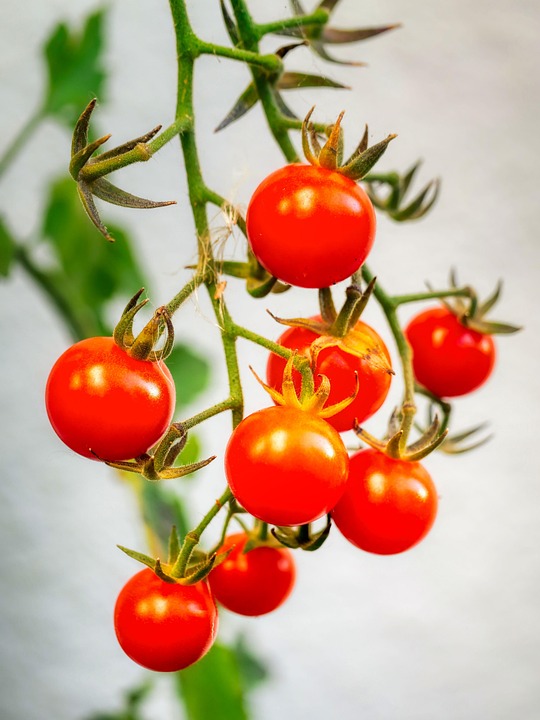The Ultimate Guide to Climate-Resilient Gardening: Thriving in the Face of Climate Change
With the increasing impact of climate change on our environment, it has become more important than ever to adopt sustainable and climate-resilient gardening practices. By making small changes in the way we garden, we can help mitigate the effects of climate change and create a more resilient and thriving garden. In this guide, we will explore the best practices for climate-resilient gardening, including tips on choosing the right plants, managing water efficiently, and creating a healthy soil ecosystem.
Choosing the Right Plants
One of the key factors in creating a climate-resilient garden is choosing the right plants. By selecting plants that are well-suited to your climate and soil conditions, you can create a garden that is more resistant to extreme weather events and fluctuations in temperature. When choosing plants for your garden, consider factors such as drought tolerance, heat resistance, and disease resistance. Look for native plants that are adapted to your local climate, as they are more likely to thrive in your garden without the need for excessive watering or chemical inputs.
Drought-Tolerant Plants
One of the biggest challenges in gardening in a changing climate is water scarcity. By choosing drought-tolerant plants, you can reduce the amount of water needed to maintain your garden and create a more sustainable and resilient landscape. Some popular drought-tolerant plants include succulents, lavender, and ornamental grasses. These plants have adapted to survive in dry conditions and require minimal watering once established.
Heat-Resistant Plants
As temperatures rise due to climate change, it is important to choose plants that can withstand heat stress. Heat-resistant plants, such as agaves, yuccas, and cacti, are well-suited to hot climates and can thrive in high temperatures. By incorporating heat-resistant plants into your garden, you can create a more resilient landscape that can withstand extreme heat events without wilting or drying out.
Managing Water Efficiently
Water is a precious resource, especially in a changing climate where droughts and water shortages are becoming more common. By managing water efficiently in your garden, you can reduce your water consumption, save money on water bills, and create a more sustainable and climate-resilient landscape. Here are some tips for managing water efficiently in your garden:
Install a Drip Irrigation System
Drip irrigation is a more efficient way to water your garden compared to traditional sprinkler systems. By delivering water directly to the root zone of plants, drip irrigation reduces water waste and evaporation, resulting in less water usage and healthier plants. Consider installing a drip irrigation system in your garden to water your plants efficiently and reduce your water consumption.
Collect Rainwater
Rainwater harvesting is a sustainable way to capture and store rainwater for use in your garden. By collecting rainwater in barrels or tanks, you can reduce your reliance on municipal water sources and provide your plants with a free and natural source of water. Use collected rainwater to water your garden during dry periods and droughts, ensuring that your plants remain healthy and hydrated without wasting precious water resources.
Creating a Healthy Soil Ecosystem
Healthy soil is the foundation of a thriving garden. By creating a healthy soil ecosystem, you can improve the resilience of your garden to climate change and create a more sustainable and productive landscape. Healthy soil is teeming with beneficial microorganisms, such as bacteria and fungi, that help break down organic matter and release nutrients for plants. Here are some tips for creating a healthy soil ecosystem in your garden:
Add Organic Matter
Organic matter, such as compost, mulch, and manure, is essential for building healthy soil. By adding organic matter to your garden beds, you can improve soil structure, increase water retention, and provide a source of nutrients for plants. Incorporate compost into your soil before planting to improve soil fertility and create a more resilient garden that can withstand fluctuations in temperature and moisture levels.
Avoid Chemical Inputs
Chemical fertilizers and pesticides can harm beneficial microorganisms in the soil and disrupt the delicate balance of the soil ecosystem. Avoid using chemical inputs in your garden and opt for organic and natural alternatives instead. Organic fertilizers, such as compost tea and fish emulsion, provide plants with essential nutrients without harming the soil ecosystem. By avoiding chemical inputs, you can create a healthier and more resilient garden that can adapt to changing climate conditions.
Conclusion
Creating a climate-resilient garden is essential in a changing climate where extreme weather events and temperature fluctuations are becoming more common. By choosing the right plants, managing water efficiently, and creating a healthy soil ecosystem, you can create a garden that is more resilient to climate change and thrives in the face of adversity. By adopting sustainable and climate-resilient gardening practices, you can create a more sustainable and resilient landscape that benefits both the environment and future generations.
With the right tools and knowledge, you can create a climate-resilient garden that adapts to changing climate conditions and provides a haven for plants, wildlife, and humans alike. By implementing the tips and strategies outlined in this guide, you can create a thriving garden that is resilient to climate change and supports a healthy and vibrant ecosystem.




















































